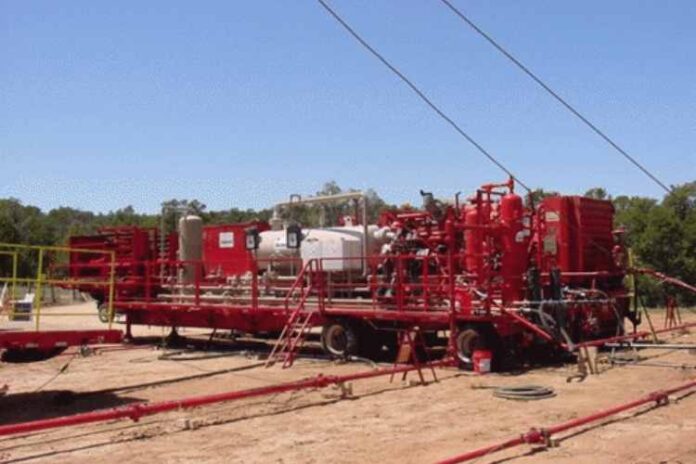After a well has been bored to the requisite depth, it must be completed before it can be used for production or injection.Completion products span from a basic packer to complex intelligent systems that enable optimal output with little involvement from production engineers. Completion equipment includes several types of production packers, liner systems, subsurface flow control equipment (sleeves, nipples, chokes, valve plugs), subsurface safety valves (SSSV), and screens as needed. The most essential component is the SSSV, which is subjected to intensive testing and inspection.
Well completion equipment components are highly specialised, and in certain cases are designed and produced to fulfil specific well needs.
The following are the primary causes for well completion:
- Prepare the well’s bottom.
- Connect the reservoir portion to allow for the production of hydrocarbons.
- Isolate the manufacturing zone from the rest of the region.
- The reservoir’s integrity
- Well intervention and stimulation are available.
Cleaning the well, running production tubing, perforating, and stimulating if necessary are all part of the well completion process. There are many different types of finishing methods and procedures, each tailored to certain reservoir types and circumstances. The following elements influence selection criteria, and striking the proper balance between costs and expected performance is critical.
- Temperature and pressure in the borehole
- Modes of operation (Natural Flow vs. Artificial Lift)
- Rates of flow
- Reservoir type
- Equipment metallurgy
- Elastomers
- The number of zones
- Costs of intervention in wells ( how expensive it is to re-enter the well, if required)
Completion is roughly classified into the following groups:
Open hole completions
Open hole completions (barefoot completion) are a type of completion in which the casing or liner is placed above the production zone and the generated fluids flow straight to the open wellbore. It is mostly utilised in reservoirs, which are well understood by engineers and provide minimal danger. Future repair work or well treatment may be difficult.
Liner Completion
Liner Completion is a form of completion in which casing is installed through the production zone, similar to open-hole completion, but a liner package is installed in the well’s production section. The benefits of this approach include greater sand management, clean out, and, in most cases, no perforation.
Liners come in a variety of types, including:
- Perforated Liner substantially decreases well completion expenses.
- Screen and liner are employed mostly in formations with soft walls to prevent walls from caving into wells and restrict fluid flow. Particles are prevented from entering the wellbore by screens that have been installed.
- Gravel Packs (a kind of coarse sand) are utilised to allow hydrocarbons to flow while keeping sediments out. It functions as a basic filtering mechanism.
- Cemented Liner refers to a liner that has been cemented across the pay zone or horizontal part of the well. It provides greater isolation control but has a larger risk of reservoir damage.
Cased Hole completion
Cased Hole Completion is one of the most common methods employed in the business, but it is also one of the most expensive. The production casing is put in the pay zone after being run to the necessary depth. To perforate the desired regions, perforating guns are employed. Cased hole completions can be single string or dual string (parallel tubing), as well as huge bore or monobore.
Multiple completions
Many completions is a completion approach that allows for the completion of multiple intervals in the wellbore, whether vertical or lateral. It also enables for the production and closure of reservoir regions as needed. While single completions are more commonly utilised in shallow formations and onshore, where drilling costs are cheaper, multiple completions are more commonly used in more expensive environments. The main advantage of multiple completion is that it allows for the creation of numerous reservoirs from a single wellbore. The primary disadvantage of repeated completions is the work-over, which is both complicated and costly.
Slim-hole completion
Slim-hole completion is a method of completion used when drilling tiny diameter wells for economic reasons (low potential and well life) or technical problems (too many wells drilled in the same field). In the wellbore, a short diameter pipe is installed as a casing. When a well begins to produce, the same pipe is employed as production tubing. Slim-hole completions are not employed if the well is intended to be artificially lifted.

















![How to fix [pii_email_32dbe586a362437df5b4] Error [pii_email_32dbe586a362437df5b4]](https://journalsdaily.com/wp-content/uploads/2021/05/pii_email_32dbe586a362437df5b4--218x150.jpg)
![What is [pii_email_644531316089eb878549] & How to Fix This Error [pii_email_644531316089eb878549]](https://journalsdaily.com/wp-content/uploads/2021/05/pii_email_644531316089eb878549-218x150.jpg)







